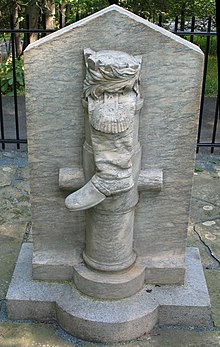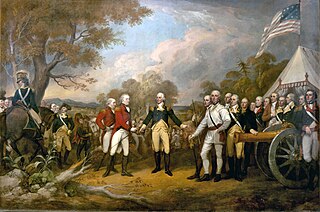
The Battles of Saratoga marked the climax of the Saratoga campaign, giving a decisive victory to the Americans over the British in the American Revolutionary War. British General John Burgoyne led an invasion army of 7,200–8,000 men southward from Canada in the Champlain Valley, hoping to meet a similar British force marching northward from New York City and another British force marching eastward from Lake Ontario; the goal was to take Albany, New York. The southern and western forces never arrived, and Burgoyne was surrounded by American forces in upstate New York 15 miles (24 km) short of his goal. He fought two battles which took place 18 days apart on the same ground 9 miles (14 km) south of Saratoga, New York. He gained a victory in the first battle despite being outnumbered, but lost the second battle after the Americans returned with an even larger force.

The Battle of Valcour Island, also known as the Battle of Valcour Bay, was a naval engagement that took place on October 11, 1776, on Lake Champlain. The main action took place in Valcour Bay, a narrow strait between the New York mainland and Valcour Island. The battle is generally regarded as one of the first naval battles of the American Revolutionary War, and one of the first fought by the United States Navy. Most of the ships in the American fleet under the command of Benedict Arnold were captured or destroyed by a British force under the overall direction of General Guy Carleton. However, the American defense of Lake Champlain stalled British plans to reach the upper Hudson River valley.
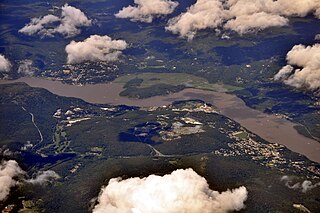
West Point is the oldest continuously occupied military post in the United States. Located on the Hudson River in New York, General George Washington stationed his headquarters in West Point in the summer and fall of 1779 during the American Revolutionary War, and later called it "the most important Post in America" in 1781 following the war's end. West Point also was the site of General Benedict Arnold's infamous and failed attempt at treason during the Revolutionary War.

The siege of Yorktown, also known as the Battle of Yorktown and the surrender at Yorktown, began September 28, 1781, and ended on October 19, 1781, at exactly 10:30 am in Yorktown, Virginia. It was a decisive victory by a combined force of the American Continental Army troops led by General George Washington with support from Marquis de Lafayette and French Army troops led by Comte de Rochambeau and a French naval force commanded by Comte de Grasse over the British Army commanded by British Lieutenant General Charles Cornwallis.
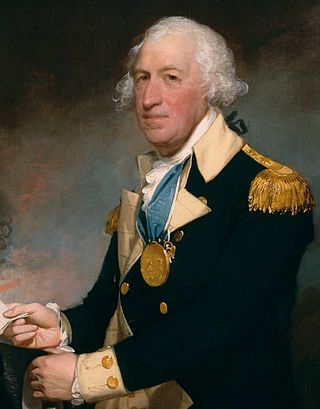
Horatio Lloyd Gates was a British-born American army officer who served as a general in the Continental Army during the early years of the Revolutionary War. He took credit for the American victory in the Battles of Saratoga (1777) – a matter of contemporary and historical controversy – and was blamed for the defeat at the Battle of Camden in 1780. Gates has been described as "one of the Revolution's most controversial military figures" because of his role in the Conway Cabal, which attempted to discredit and replace General George Washington; the battle at Saratoga; and his actions during and after his defeat at Camden.
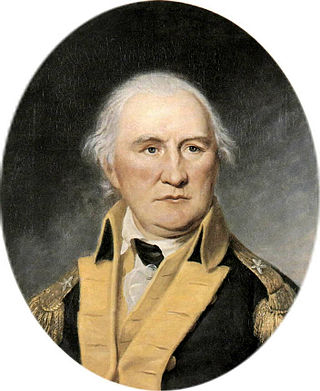
Daniel Morgan was an American pioneer, soldier, and politician from Virginia. One of the most respected battlefield tacticians of the American Revolutionary War of 1775–1783, he later commanded troops during the suppression of the Whiskey Rebellion of 1791–1794.

The Saratoga campaign in 1777 was an attempt by the British high command for North America to gain military control of the strategically important Hudson River valley during the American Revolutionary War. It ended in the surrender of the British army, which historian Edmund Morgan argues, "was a great turning point of the war, because it won for Americans the foreign assistance which was the last element needed for victory."
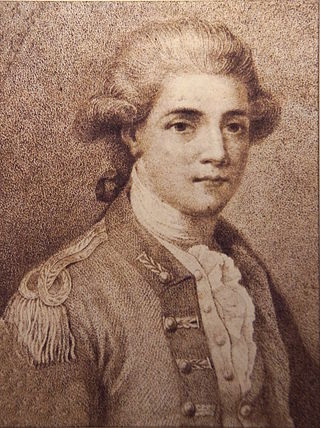
Major John André was a British Army officer who served as the head of Britain's intelligence operations during the American War of Independence. In September 1780, he negotiated with Continental Army officer and turncoat Benedict Arnold, who secretly offered to turn over control of the American fort at West Point, New York to the British. Due to a series of mishaps and unforeseen events, André was forced to return to British lines from a meeting with Arnold through American-controlled territory while wearing civilian clothes.

Benedict Arnold was an American-born military officer who served during the American Revolutionary War. He fought with distinction for the American Continental Army and rose to the rank of major general before defecting to the British in 1780. General George Washington had given him his fullest trust and had placed him in command of West Point in New York. Arnold was planning to surrender the fort to British forces, but the plot was discovered in September 1780, whereupon he fled to the British lines. In the later part of the war, Arnold was commissioned as a brigadier general in the British Army and placed in command of the American Legion. He led the British army in battle against the soldiers whom he had once commanded, and his name became synonymous with treason and betrayal in the United States.
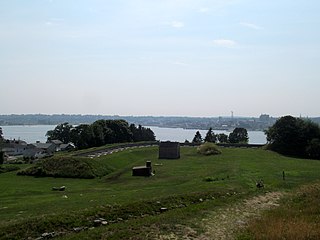
The Battle of Groton Heights was a battle of the American Revolutionary War fought on September 6, 1781 between a small Connecticut militia force led by Lieutenant Colonel William Ledyard and the more numerous British forces led by Brigadier General Benedict Arnold and Lieutenant Colonel Edmund Eyre.
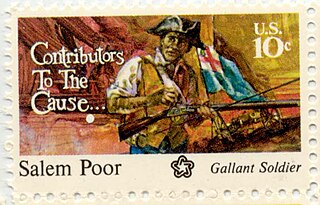
Salem Poor (1747–1802) was an enslaved African-American man who purchased his freedom in 1769, became a soldier in 1775, and rose to fame as a war hero during the American Revolutionary War, particularly in the Battle of Bunker Hill.

Saratoga National Historical Park is a United States National Historical Park located in the Town of Stillwater in eastern New York, 30 miles north of Albany. The park preserves the site of the Battles of Saratoga.

John Watts de Peyster, Sr. was an American author on the art of war, philanthropist, and the Adjutant General of New York. He served in the New York State Militia during the Mexican–American War and American Civil War. He was one of the first military critics and noted for his histories of the Revolutionary and Civil Wars, and also published works of drama, poetry, military history, military biography and military criticism.
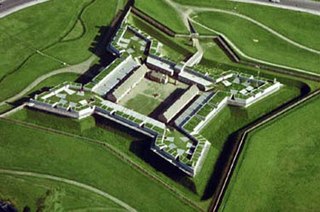
The siege of Fort Stanwix began on August 2, 1777 and ended on August 22, 1777. Fort Stanwix, at the western end of the Mohawk River Valley, was a primary defense point for the Continental Army against the British and indigenous forces aligned against them during the American Revolutionary War. The fort was occupied by Continental Army forces from New York and Massachusetts under the command of Colonel Peter Gansevoort. The besieging force was composed of British regulars, Loyalist soldiers, Hessians, and indigenous warriors, under the command of Brigadier General Barry St. Leger. St. Leger's expedition was a diversion in support of Lieutenant General John Burgoyne's campaign to take control of the Hudson River Valley to the east.

The military career of Benedict Arnold in 1775 and 1776 covers many of the military actions that occurred in the northernmost Thirteen Colonies early in the American Revolutionary War. Arnold began the war as a captain in Connecticut's militia, a position to which he was elected in March 1775. Following the outbreak of hostilities at Lexington and Concord the following month, his company marched northeast to assist in the siege of Boston that followed. Arnold proposed to the Massachusetts Committee of Safety an action to seize Fort Ticonderoga in New York, which he knew was poorly defended. They issued a colonel's commission to him on May 3, 1775, and he immediately rode off to the west, where he arrived at Castleton in the disputed New Hampshire Grants in time to participate with Ethan Allen and his men in the capture of Fort Ticonderoga. He followed up that action with a bold raid on Fort Saint-Jean on the Richelieu River north of Lake Champlain. He then resigned his Massachusetts commission after a command dispute with the head of a detachment of Connecticut militia troops that arrived in June to reinforce Ticonderoga.

The military career of Benedict Arnold from 1777 to 1779 was marked by two important events in his career. In July 1777, Arnold was assigned to the Continental Army's Northern Department, where he played pivotal roles in bringing about the failure of British Brigadier Barry St. Leger's siege of Fort Stanwix and the American success in the battles of Saratoga, which fundamentally altered the course of the war.

The military career of Benedict Arnold in 1781 consisted of service in the British Army. Arnold had changed sides in September 1780, after his plot was exposed to surrender the key Continental Army outpost at West Point. He spent the rest of 1780 recruiting Loyalists for a new regiment called the American Legion. Arnold was then sent to Virginia with 1,600 men in late December by General Sir Henry Clinton, with instructions to raid Richmond and then establish a strong fortification at Portsmouth.
Benedict Arnold: A Question of Honor is a 2003 American television film directed by Mikael Salomon and starring Aidan Quinn, Kelsey Grammer, Flora Montgomery and John Light. It portrays the career of Benedict Arnold in the American Revolutionary War and his dramatic switch in 1780 from fighting for American Independence to being a Loyalist trying to preserve British rule in America. Arnold's relationships with his wife Peggy Shippen and the British officer John André are focused on. The friction between Arnold and General Horatio Gates, portrayed near the beginning of the film, was historically accurate. The movie points out that, before his treason, Arnold was considered a patriot and a hero. A letter from General Washington is read at the beginning where he enthusiastically recommends Arnold for promotion saying that there is no general in the army more deserving and even comparing him to Hannibal. The movie briefly documents Arnold's final years of exile in England in which he laments his treasonous acts, realizing that he is despised and that people compare him with Judas and Lucifer.
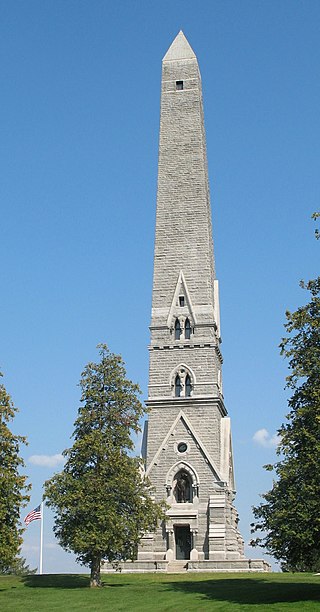
The Saratoga Battle Monument is a 155-foot (47 m) granite obelisk located in the village of Victory, Saratoga County, New York. The monument commemorates what is called the "Turning Point" of the American Revolution—the surrender of British forces led by General John Burgoyne to the Americans under General Horatio Gates.
